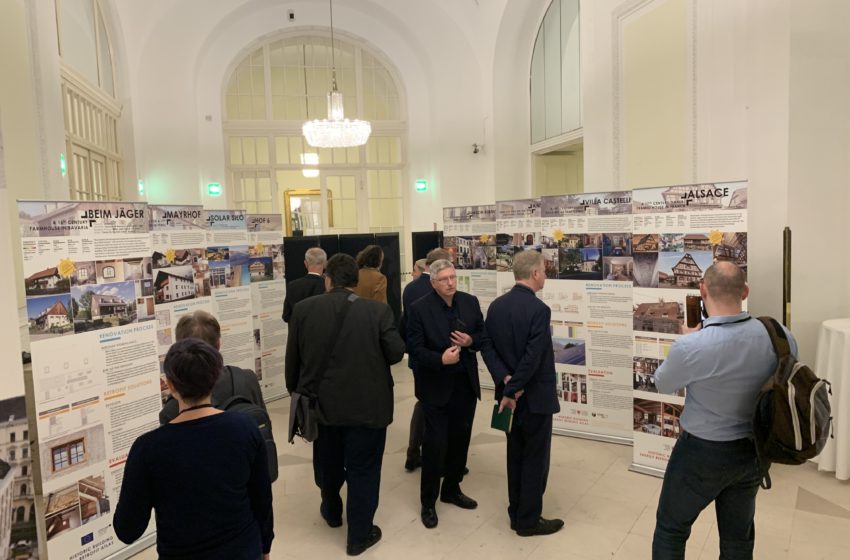Touring exhibition shows retrofits in 11 historic buildings
November 27, 2019
In October, Vienna became the first venue for the new touring exhibition Historic Buildings Energy Retrofit Atlas. At the European Congress on the Use, Management and Conservation of Buildings of Historical Value held in Austria’s capital, 12 roll-up banners showed the positive impact that energy retrofits had on historic buildings in different countries. The banners were created by researchers working for the IEA Solar Heating and Cooling Programme. They not only selected the case studies but also collected the data and photos for each banner. Organisations interested in joining the tour and exhibiting at one of the venues can send an email to Eurac Research, the Italian-based institute coordinating the project (see details below).
Photo: Eurac Research
“Historic buildings are an integral part of our cities and our landscape, but to keep them in use, they need to become comfortable and affordable,” said Alexandra Troi, Vice Director of Eurac and Coordinator of the IEA SHC task Renovating Historic Buildings Towards Zero Energy. “Our exhibition shows in an easily understandable manner how you can achieve a nearly zero energy standard while keeping the aesthetic and historic values of the buildings intact.”
One high point of the exhibition is the Villa Castelli at Lake Como in Italy. The energy retrofit in the protected building with a net floor area of 564 m2 has led to a 90 % reduction of the energy needs and a significant increase in comfort. The demand that remains can be met by a heat pump and a PV generator. The 11 kWp system that covers the top of the building is made up of monocrystalline PV elements, which have been fixed to grey aluminium sheets to make it look like the roof has been coated in the same material all over. A detailed account of how the villa was retrofitted can also be found online (https://www.hiberatlas.com/de/villa-castelli–2-23.html).
Villa Castelli in northern Italy is a protected 19th-century building owned by a family. It has been transformed into a zero-energy building by improving insulation and installing an energy supply system based on a PV generator and a geothermal heat pump.
Photos: Hiberatlas.com (© V. Carì)
The exhibition has already started its tour around the world. Attendees at the SHC 2019 conference, held in Santiago de Chile earlier this year, were able to take a look at four of the banners, while the complete set of 11 project descriptions will, for example, be shown in Coburg, Germany, in January 2020, when the local university’s architecture students showcase their work. Other stops include a Historic Environment Scotland event in Stirling, in February 2020, and an IEA SHC expert meeting in Izmir, Turkey, in September 2020.
For more information, please contact Daniel Herrera, Eurac Research, at Daniel.Herrera@eurac.edu


